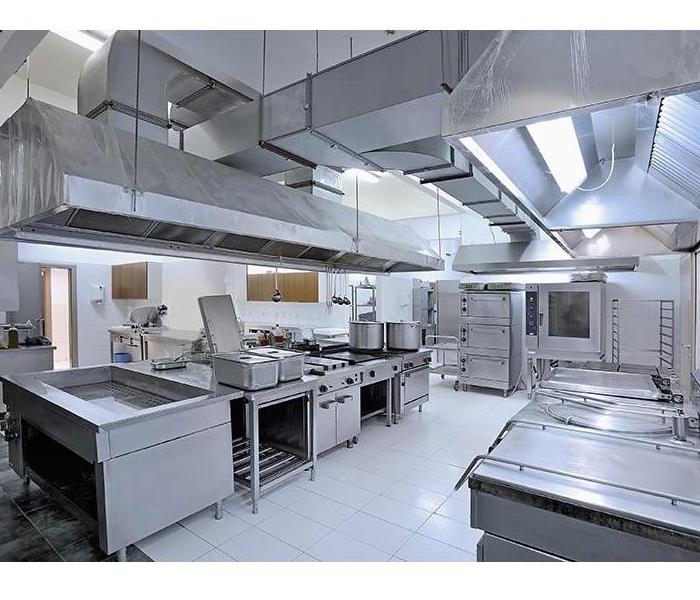6 Steps to a Professional Kitchen Hood Cleaning
9/25/2019 (Permalink)
Regular cleanings of restaurant kitchen hood vents are an essential part of any fire safety maintenance plan. Without regular attention, oil and other debris can build up in the hood, exhaust fan, filters and ductwork, significantly increasing the chances of a grease fire. Undergoing a hood cleaning twice a year will help you meet the National Fire Protection Agency’s (NFPA) standards for reducing the risk of fire. This process typically takes between three and six hours. To help you prepare for your upcoming appointment, here’s a guide to what to expect during this procedure.
What Happens During a Professional Hood Cleaning?
- Kitchen Prep
Hood cleaning may create a mess, so the cleaning company will begin by prepping the kitchen for the process. This includes turning off pilot lights and gas valves, covering appliances, and removing any items that could potentially get contaminated by the cleaning chemicals and dirty water. The cleaning crew will also remove all filters and disassemble any wall-mounted hoods and fans for cleaning.
- Filter Cleaning
Kitchen exhaust filters often become caked in grease and grime. The hood cleaning process involves removing the filters and soaking them in a cleaning solution to loosen the hardened grease. After several hours, the filters are power-washed and then reinstalled.
- Fan Cleaning
Kitchen exhaust fans are another place where grease builds up. Fire safety maintenance requires the fans to be removed for a thorough cleaning from top to bottom to reduce hidden hazards. The crew will spray the fan with degreasing chemicals and then scrub the blades clean by hand and power washing. Before the fans are reinstalled, the entire system is inspected and the fan belts replaced to ensure it’s in working order.
- Vent & Ductwork Inspection
NFPA guidelines require that all exhaust duct systems be cleaned and degreased regularly, so a thorough hood cleaning includes manually scraping any solidified grease from the vents and ducts before spraying on chemicals to dissolve the remaining grease. After a final scrub, the vents and ductwork are inspected to ensure they comply with NFPA rules.
- Power Washing
Once the fans, vents, and filters are clean, the crew will tackle the kitchen hoods themselves. This begins with manually scraping congealed grease from the hood, and then applying a degreasing cleaning chemical to loosen any remaining residue. After 30 to 60 minutes, the cleaners power-wash the hood with hot water, leaving it clean and free of grease that could start a fire.
- Inspection & Documentation
The final step of the process happens once the crew has restored the kitchen to its prior condition. This is when the process will be documented and your technician will apply a certification sticker to the unit. This tells health inspectors and insurance companies that you are in compliance NFPA guidelines and have worked with licensed fire protection services to ensure the safety of your kitchen.
If your restaurant kitchen hood needs cleaning, call SERVPRO of The Saint Croix Valley at 715-381-2266. Our trained professionals can help many of your professional cleaning and mitigation needs.






 24/7 Emergency Service
24/7 Emergency Service
